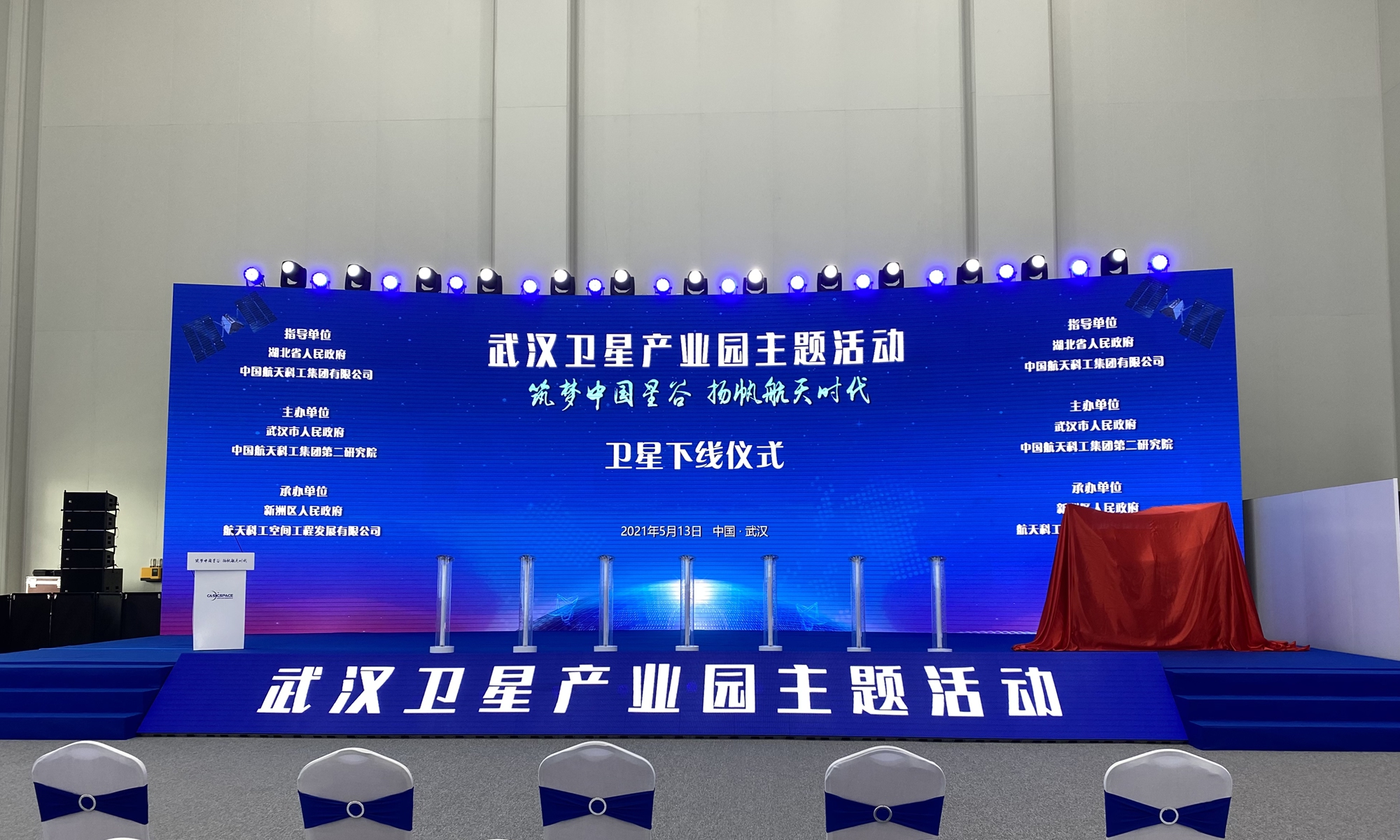
Photo: Deng Xiaoci/GT
The Satellite Industrial Park at the Wuhan National Aerospace Industrial Base in Central China's Hubei Province, home to the country's first smart satellite production line, marked a new milestone on Thursday, as the first satellite it manufactured officially rolled off the line.
This progress shows that the park's smart production line has effectively veri-fied its feasibility, marking the start of an era of mass production of satellites, Global Times learned from the industrial park's operator, CASIC Space Engi-neering Development Co (CASIC Space), a subsidiary of state-owned aero-space giant China Aerospace Science and Industry Corp (CASIC), on Thurs-day.
The first satellite manufactured in the park was unveiled on Thursday, an event that was witnessed by Hubei provincial and Wuhan municipal officials as well as a delegation of CASIC.
According to CASIC, the satellite is a "typical communication satellite" targeted for future mass production. In the future, the smart production line will expand its scope of production to cover satellite types that have a variety of application fields, including communication and low-orbit space-borne internet services, which will support the country's new infrastructure campaign.
With a total investment of nearly 1.34 billion yuan ($204.96 million), the main part of the park is a smart satellite production line based on digital twin and cloud technologies. Construction of the park started in April 2019, and is now ready to become fully operational, CASIC Space revealed.
Once completed, the smart production line will enhance satellite manufacturing efficiency by more than 40 percent, reducing the average production term for a single satellite by over 80 percent, while saving production area by 70 percent per satellite, it said, while announcing that an annual assembly, integration and testing (AIT) output of 240 satellites weighing less than one ton can be expected from the production line.
Once hammered by the COVID-19 outbreak and now having overcome the epidemic, Wuhan is also home to a rocket complex that is expected to possess the capability to manufacture 20 solid-fuel commercial carrier rockets every year.
Kuaizhou-11, dubbed China's most powerful solid-propellant rocket, which is capable of sending payloads of over one ton to the Sun-Synchronous Orbit, is also under development in the Wuhan-based rocket complex.




